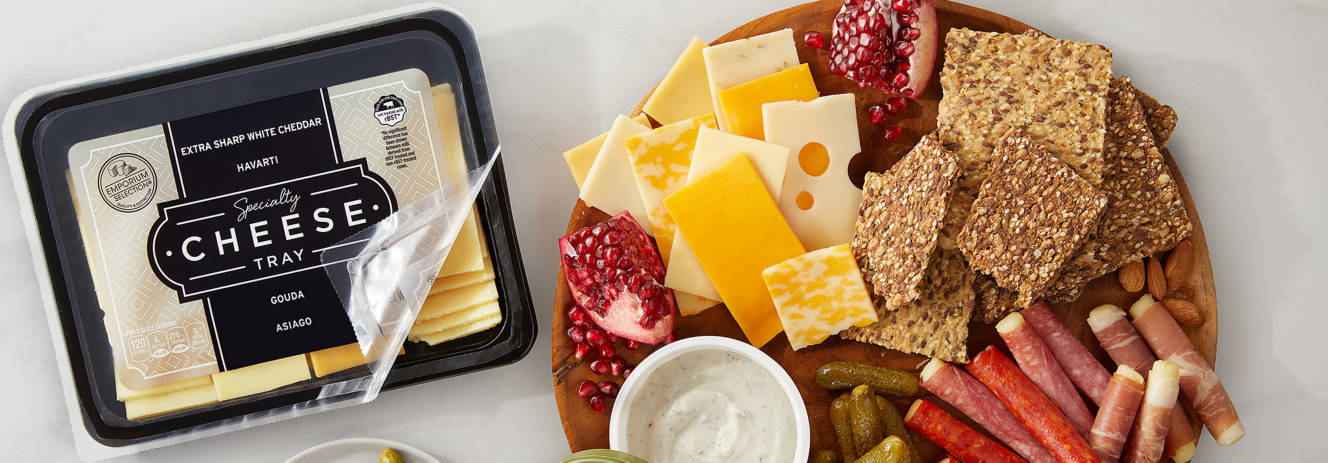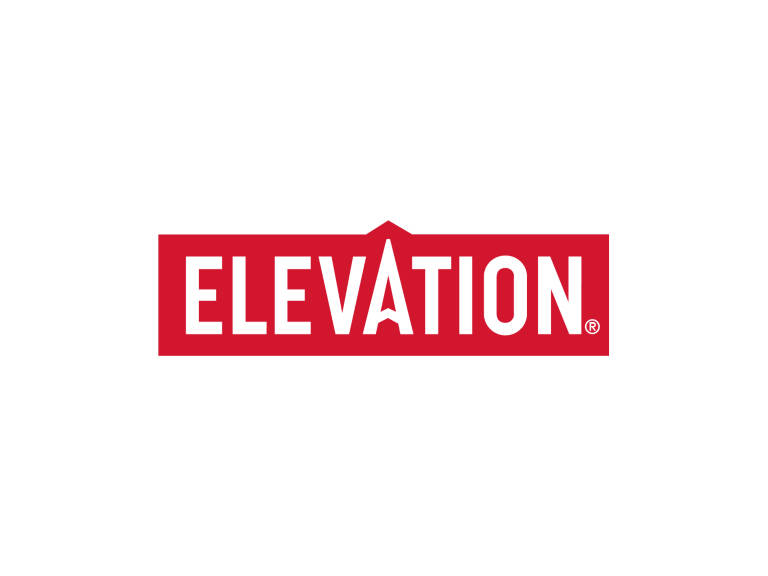
- Relevance
- Name (A to Z)
- Name (Z to A)
- Price (Low to High)
- Price (High to Low)
Emporium Selection Recipes
Emporium Selection FAQs
A: In addition to being delicious, there are potential health benefits that come along with eating cheese. However, some cheeses are more nutritious than others. Aim to avoid highly processed cheeses as they are high in sodium and additives. While cheese can be high in fat, most cheese is a good source of protein, calcium and other vitamins that can be beneficial to your health. Some cheeses may even support gut health. Check with your doctor or nutritionist to learn more about the benefits of including cheese in your diet.
A: A good rule of thumb is to not buy more cheese than you’ll be able to consume within a few days. However, if you have a chunk of leftover cheese that you’ll need to keep in the refrigerator for more than a few days, it’s important to know how to store it properly. If you are storing a soft, semi-soft or semi-hard cheese, it is best to wrap the cheese in cheese paper or parchment paper. The cheese will be protected, but air will still be able to filter through the paper. Soft cheeses need to be exposed to air so that they don’t become too moist or watery. If you wrap soft cheeses in plastic wrap, it will trap in moisture that will ruin the flavor and texture of the cheese. When storing hard cheeses, the main concern is the cheese drying out. The best way to prevent this is to tightly wrap the cheese in cheese or wax paper and then seal it with tape. If you think that you’ll eat the hard cheese fairly quickly, you can wrap it in plastic wrap or store it in a sealed glass container.
A: You can tell if cheese has gone bad if there is an abnormal presence of mold, change in color or change in smell. Texture changes can also indicate that your cheese has gone bad. Be sure to look for these signs as well as checking the expiration date on the packaging to determine if your cheese has gone bad.
A: It is possible to freeze some types of cheese to extend its shelf life. Typically, cheeses that are harder will freeze better than soft cheeses. Cheeses that are used for cooking tend to freeze better than cheeses that are intended to be eaten on their own. Cheeses with a natural rind usually do not freeze well. The best cheeses to freeze are cheddar, Swiss, mozzarella, muenster, provolone and parmesan. Using a vacuum sealer is the best way to store cheese in the freezer. If you use this method, the cheese should be good for about 2 months in the freezer. If you don’t have a vacuum sealer, you can wrap the cheese tightly in parchment paper and then wrap it in an additional layer of aluminum foil. The parchment/foil method will keep the cheese good for about a month. A freezer bag will also do the trick if you squeeze out the air, however, this method will only keep the cheese good for about 2 weeks.
A: With so many types of cheeses and wines, pairing them together can be overwhelming. Here are a few key things to keep in mind when searching for the perfect cheese and wine pairing:
- Typically, wines and cheeses from the same region will pair well together.
- Contrasting flavors work well. Pair salty cheese with a sweet wine and vice versa.
- Pair wine and cheese of the same intensities so that the flavors don’t overwhelm each other.
- You don’t only have to pair cheese with wine. You can pair cheese with soda, coffee, chocolate and more.
A: Shop Earth Grown for a selection of affordable and delicious vegan cheeses at your local ALDI.
A: The best thing about charcuterie boards is that you can customize them with all your favorite cheeses! Focus on adding a variety of textures, flavors and colors to your charcuterie board. Shop our selection of high-quality charcuterie essentials including cheese, crackers, nuts, meats, dried fruits and more at your local ALDI.
A: If you’re eating your cheese cold, you may not be experiencing the full flavor or the texture at its best. Cheese is high in fat, so when the molecules are cold, they contract. This makes it more difficult to determine flavor. When cheese is served at room temperature, you can enjoy the full flavor and texture that makes each type of cheese unique. Most cheeses should be taken out of the refrigerator about an hour and a half before serving. Keep the cheese in its packaging so that it doesn’t dry out. If the cheese is runnier like brie, you’ll want to give it about 2-3 hours to get to room temperature. Fresh cheeses will only need about 30 minutes before serving to reach room temperature.
A: There’s no doubt that cheese is delicious. It’s also incredibly versatile and can be used for breakfast, lunch, dinner and even dessert recipes! Here are a few ideas for incredible desserts featuring cheese:
- Cream cheese: dips, cheesecake, brownies and pies
- Ricotta: cannolis, tiramisu, mousse, cookies and cakes
- Mascarpone: blondies, cakes, tarts and trifles
Discover exclusive value with ALDI's private labels! Emporium Selection is just one of the ways you can save money with affordable groceries, without sacrificing quality. Explore our high-quality private label products for unbeatable savings. Shop now for a unique range of groceries, household essentials, weekly specials and more.









